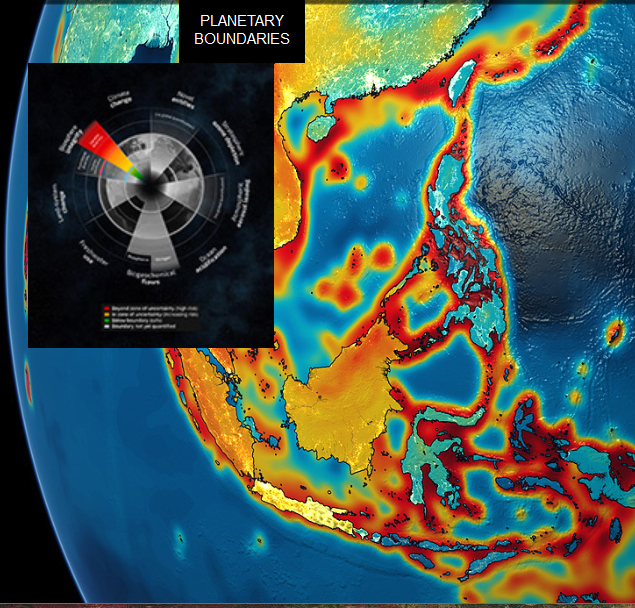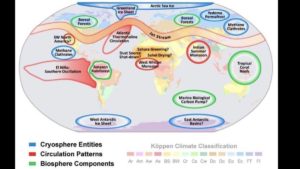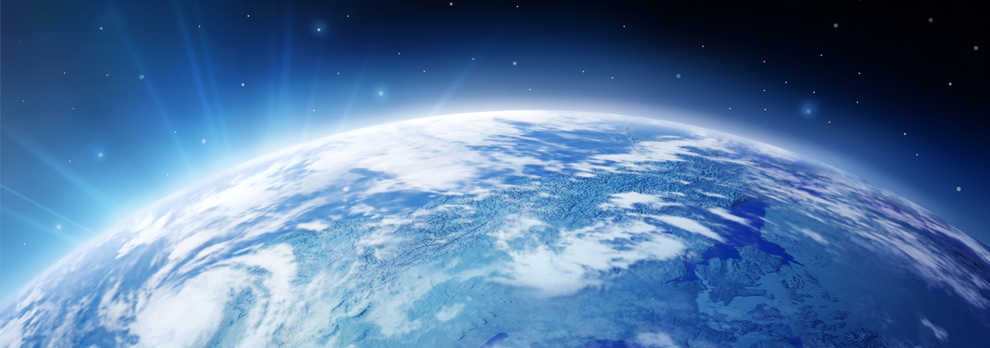Stressors

This section will look at stressors that are now impacting our planet in irreversible and incontrovertible ways. Many of these identified stressors are currently posing a threat to the continuation of life on the planet. Additionally, there are still many as yet unidentified. In many ways it is becoming clear that humanity is destroying the life support systems of the planet.
– Graham Saul
The Stockholm Resilience Center identifies 9 related boundaries to maintain in order to preserve the biosphere. In order to preserve life on the planet these 
“Four of nine planetary boundaries have now been crossed as a result of human activity: climate change, loss of biosphere integrity, land-system change, altered biogeochemical cycles (phosphorus and nitrogen). Two of these, climate change and biosphere integrity, are what the scientists call ‘core boundaries’.” – Anthropocene.info
The stressors listed in this section are making large impacts on planetary boundaries and moving us beyond 
we can still prevent many of the worst impacts of climate change from playing out.
Still others are saying we can maintain hope, as long as it’s wise hope. Scientific consensus has already concluded that the situation is dire and that time is now extremely limited to tackle this planetary crisis. The latest IPCC report recently gave humanity only 8-10 years. It is paramount to review these topics with urgency. Robert Burrowes wrote it is going to be a tough fight for human survival, particularly this late in the ‘game’. Nevertheless, I intend to fight until my last breath. I hope that you will too.
We all know that actions speak louder than words. Despite the inertia we are facing from every sector, taking action now is crucial. Each of these sections will list some actions you can take today on the individual level as well as attempt to discuss and address the larger big picture problems.
Stressors
| Economic Growth | Among the myriad threats now facing humanity, our current economic system is a top culprit. It is an economy based on a form of capitalism often referred to as neoclassical or limitless growth economy. |
| Climate | Climate change is intensifying drought, storms, and floods around the world. Where nature has been destroyed by development, communities are at risk from these intensified climate patterns. |
| Population | The Project Drawdown analysis of available and workable policy measures to minimise global greenhouse gas emissions ranks family planning and educating girls among the top 10. |
| Forests | Deforestation is clearing Earth’s forests on a massive scale, often resulting in damage to the quality of the land. |
| Biodiversity | World Wildlife Foundation estimates 60% of global biodiversity loss results from clearing land for meat-based diets. Humans are a ‘force of Nature’. Our habits and preferences impact biodiversity immensely. |
| Soil | Half of the topsoil on the planet has been lost in the last 150 years. In addition to erosion, soil quality is affected by other aspects of agriculture. |
| Oceans | Human activities are threatening the health of the world’s oceans. More than 80 percent of marine pollution comes from land-based activities. From coral bleaching to sea level rise, entire marine ecosystems are rapidly changing. |
| Clean Water | Today fully one-sixth of the world’s human population lacks access to clean drinking water, and more than two million people—mostly kids—die each year from water-borne diseases. The U.S. Agency for International Development (USAID) predicts that by 2025 one-third of all humans will face severe and chronic water shortages. |
| Atmosphere | Air pollution in the form of carbon dioxide and methane raises the earth’s temperature. Another type of air pollution, smog, is then worsened by that increased heat. |
| Diet | The numbers don’t lie. Animal agriculture and meat consumption are significant contributors to climate change. Some are saying it’s now on track to be among the world’s biggest contributors to climate change. |
Please Share
We strongly urge you to share the Facing Future Initiative and website widely with your contacts and social media. Share by posting the link to FacingFuture.Earth in blogs and emails to friends and colleagues. Write articles and Letters to the Editor of your local news paper. Use imaginative means to share the effort with new communities. Subscribe to our Newsletter and help us improve our outreach in any way you can using the Contact form we provide.
